Universal Design assures accessibility for all ages, abilities
Design for universal use, collective understanding.
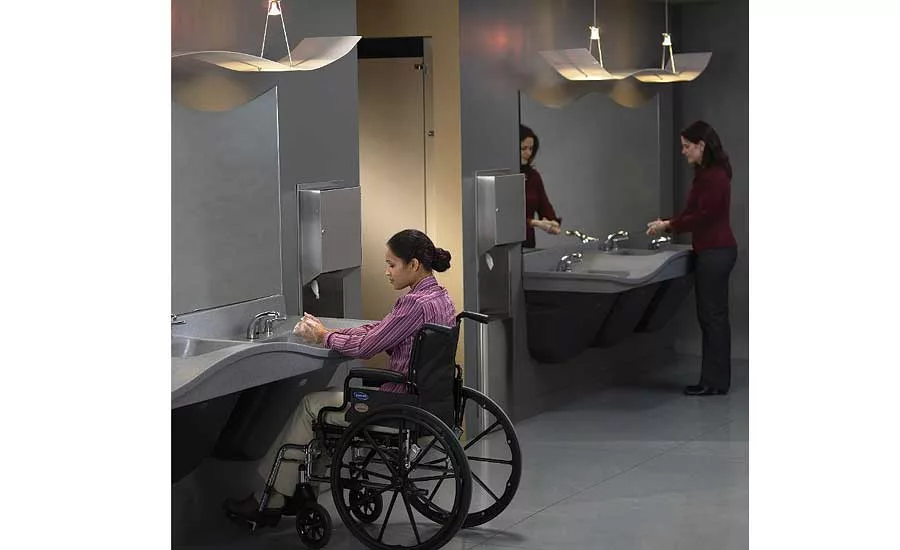
The height of the sink is important to Universal Design. Ideally it should be within reach of someone in a wheelchair, yet should not be too low for those standing. Many public places offer multiple sinks with varying heights. Photo credit: Bradley

Foldable shower seats take up less space and are ideal for all ages. Teak is good for the bathroom because it is versatile, moisture resistant and requires little maintenance. Photo credit: MTI Bath
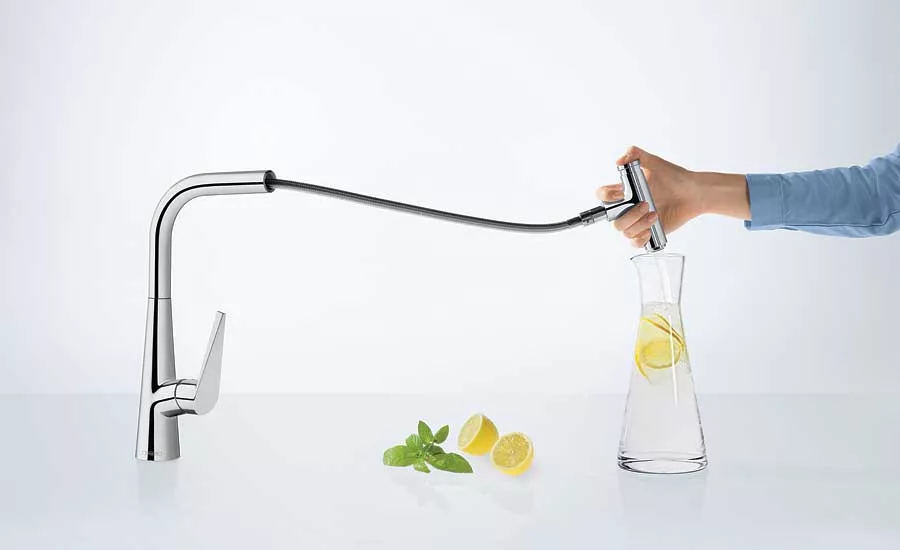
Levers and push-buttons are a user-friendly alternative to grasping and turning knobs. With this faucet, turning the lever handle sets temperature and water volume, and the water flow is turned on or off by pushing the Select button on top of the pull-out spout. Photo credit: Hansgrohe
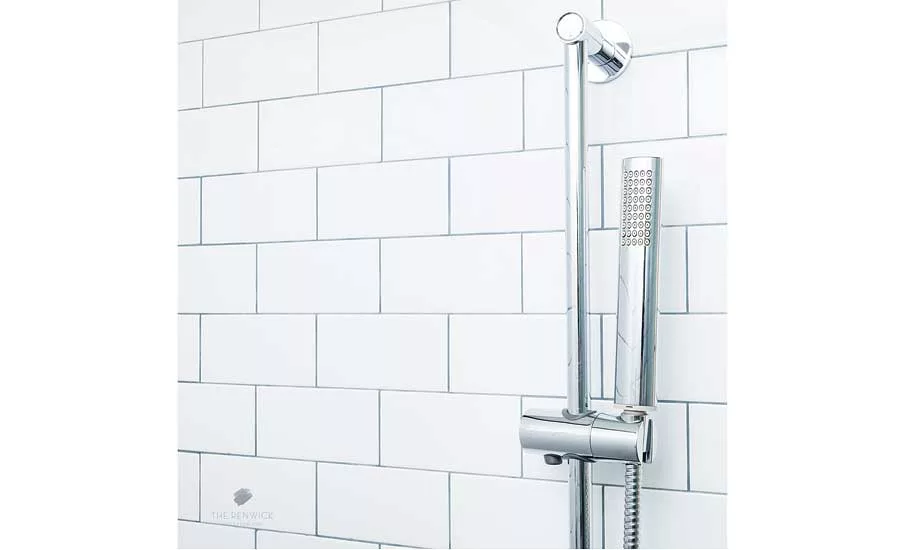
An adjustable shower bar allows for convenient usage by individuals of any height. It also allows users to choose between leaving it mounted or using it as a handshower. Photo credit: DXV
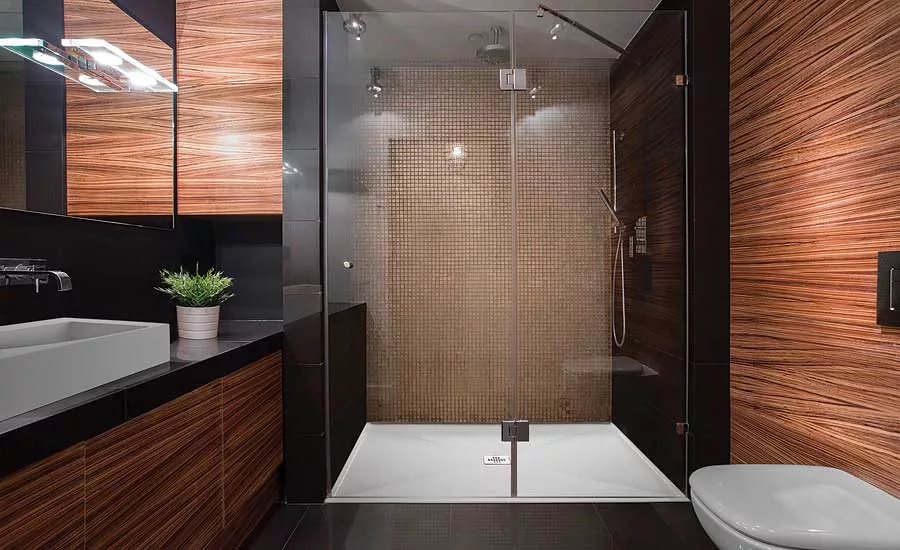
Low- and zero-threshold showers are ideal for seniors as well as anyone in a walker or wheelchair. They also allow for a more open look in smaller bathrooms. Photo credit: MTI Bath

This vanity was remolded for a child with a form of dwarfism. It offered a bottom drawer that was easily modified with a toe-kick front that now opens up to steps for the child. Since the drawer was on casters, it’s easy for the child to pull out so the child can climb the steps and use the sink. And when closed, the steps are folded inside and the exterior appears like a normal drawer. Photo credit: Strasser Woodenworks
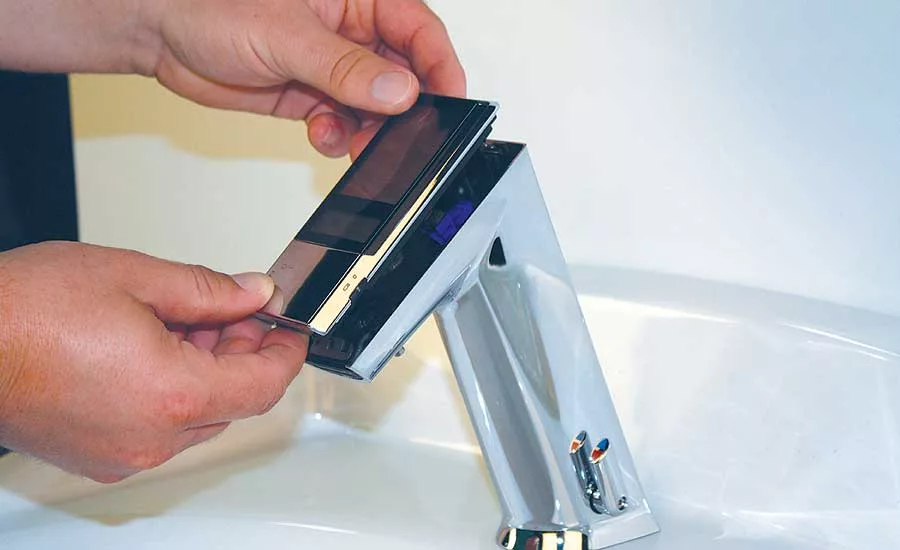
With its automatic sensors and touch-free application, this faucet is just one of many products that caters to Universal Design. Coupled with its high design element, it is engineered to be inclusive to as many potential users as possible. Photo credit: Sloan
As the baby boomer generation ages, implementation of ADA-compliant products and the desire for Universal Design in homes is on the rise.
A design for all
While the Americans with Disabilities Act is a civil rights law that mandates accessibility for the disabled, Universal Design does not necessarily equate to ADA-compliant.
A number of manufactures say the first thing contractors need to know and educate homeowners about is the difference between the two. First and foremost, Universal Design is the idea that accessibility is not just for the physically challenged or the aging.
“I think that’s probably the No. 1 misconception and probably the No. 1 thing that plagues the principles of what Universal Design is,” says Jason McNeely, sales training manager at Hansgrohe North America. “The majority of people out there think it’s for the handicapped or it’s to be associated with ADA requirements, but it is not. It’s really just a concept that’s for everybody; it’s about making things simpler, easier and more intuitive to use, and that’s all products in the built environment and in the structure itself.”
It does not take an existing product and make it “watered down” to meet the needs of many people, says Haley Davis, product manager of bathware at Mansfield Plumbing. “Universal Design promotes a broad design but includes features that enhance an experience for some without hindering it for others. It is becoming a customary way of thinking not only in the U.S. but internationally, as well.”
According to the National Association of Home Builders: “Universal Design is the design of products and environments to be usable by all people, to the greatest extent possible, without the need for adaptation or specialized design. Everyone can use Universal Design — young or old, short or tall, healthy or ill, living with a disability or being a prize-winning athlete. Because of Universal Design, people who are very different can all enjoy the same home. And that home will be there for all its inhabitants even when their needs change.”
The 7 principles of universal design
The Center for Universal Design at North Carolina State University listed the seven principles behind Universal Design. The authors — a working group of architects, product designers, engineers and environmental design researchers — collaborated to establish the following Principles of Universal Design to guide a wide range of design disciplines including environments, products, and communications.
These principles may be applied to evaluate existing designs, guide the design process, and educate both designers and consumers about the characteristics of more usable products and environments.
Equitable use
The first is to be sure the design is useful and marketable to people with diverse abilities. The design should be appealing and avoid stigmatizing any user.
The biggest trend Kathleen Donohue, CMKBD, CAPS — senior designer at Neil Kelly Co., sees across markets is curbless showers.
“They appeal to young and old,” she says. “Also, adding functional stabilization bars rather than industrial-looking grab bars adds a useful safety feature, looks great and saves money because they combine the functions of a shelf and a grab bar so you don’t need to frame-in a shampoo niche.”
Flexible use
Second, the design accommodates a wide range of individual preferences and abilities. These can include varying heights of countertops in kitchens, using levers instead of knobs on faucets, a push button spray showerhead, etc. It should also keep in mind right- and left-handed users.
“When it comes to Universal Design — and we like to call it multi-generational design — the focus is on the inhabitants of that particular household because it is about creating an environment that is going to be stylish and, at the same time, provide safety and comfort for the residents of that particular household,” says Michael Kornowa, director of marketing at MTI Baths. “ADA has absolutely no bearing on what you do. It’s all about the people in that house and will be different than the requirements and needs and desires of people in another house.”
Universal Design is here to stay, says Javier Korneluk, senior director of global sales and marketing, GRAFF.
“Even apart from ADA compliance, it is overwhelmingly tied to the age of the American consumer,” he says. “As the population ages, they are in need of designs that fit a range of needs.”
Intuitive and simple use
The third principle is to ensure the use of the design is easy to understand, regardless of the user’s experience, knowledge, language skills or current concentration level.
“If you really think about society and how we operate devices now, everything is simple and easy to understand,” McNeely says. “Everything from starting your car with a push button to pressing on a phone or tablet screen is simple, easy and intuitive.
“We have a generation of children who are growing up with touchscreen computers. When you transfer that into our realm in the shower, there were shower heads you used to have to grasp and turn them to change the spray mode. Now, with the Select concept, you’re simply pressing a button. That’s very, again, intuitive. You understand what it is when you see it.
“For the younger generation coming up, it’s obvious to them. It’s what they’re used to. For the older generation, it’s very widely accepted because, of the aging population, a great deal of them are going to develop arthritis, and grasping and turning things is going to be more and more difficult.”
Perceptible information
The fourth principle is that the design communicates necessary information effectively to the user, regardless of ambient conditions or the user’s sensory abilities. This can be achieved by using different modes (pictorial, verbal, tactile) for redundant presentation of essential information, providing adequate contrast between essential information and its surroundings, maximizing legibility of essential information, differentiating elements in ways that can be described (i.e., making it easy to give instructions or directions), and providing compatibility with a variety of techniques or devices used by people with sensory limitations.
“We see lots of bathrooms and kitchens using horizon lines with tiles — horizontal designs incorporated with one or more horizontal strips in both showers and kitchen backsplashes,” says Maria Stapperfenne, CMKBD, manager at Tewksbury Kitchens & Baths. “These actually assist with individuals with poor eyesight and/or balance issues to create a horizon perspective — children and adults alike. Most shower or bathtub enclosures are white or have very little contrast. For someone who has vision challenges, they usually don’t wear the glasses while showering, making it even more difficult to get aligned.”
“We placed symbols on top of the soap dispenser and hand dryer so that people who are unfamiliar with the design of our sensor-operated, all-in-one hand washing system can very quickly understand the process,” says Morgan Butts, PWT, associate product line manager of sink systems at Sloan. “The hand dryer even includes an LED display that says the word ‘dry’ on your hand as well.”
Safety and comfort
The fifth principle states the design should minimize the hazards and adverse consequences of accidental or unintended actions. Wet floors can lead to a range of accidents as small as a momentary lack of balance to something far worse, such as a slip and fall. From shower floors and tubs with built-in, slip-resistant floors to all-in-one handwashing systems, there are many ways to minimize hazards.
“Since all handwashing elements are easily accessible in one unit, the user needn’t move from the station in search of soap, towels or a hand dryer,” says Kris Alderson, senior marketing manager, Bradley Corp. “In addition to user convenience, this integrated design ensures that water stays in the basin as opposed to dripping on the floor or down the walls. This all-in-one aspect of the design is especially important for those with mobility challenges who may otherwise need to use wet hands while using a walker, cane or wheelchair to access a dryer.”
Scalding can also be an adverse consequence of accidental or unintended actions and is a concern for both older adults and young children.
“Many of our shower faucets and single-control bathroom faucets offer an adjustable Hot Limit Safety Stop, which limits the amount of hot water allowed to mix with cold to reduce the risk of accidental scalding,” says Eric S. Kozak, director, marketing direct-to-consumer channel, CAPS, American Standard.
Low physical effort
Sixth, the design can be used efficiently and comfortably and with a minimum of fatigue. More and more homes are being remodeled for living in place and ease-of-use goals with any kind of mobility limitation. By properly targeting this category, plumbers and contractors can find additional revenue streams and create increased profits with new business categories.
“In the past few years, skirted tubs tended to be the trend in Universal Designs,” says Lynn Hardy, operations manager at Americh Corp. “This is still the most popular, but we have seen a significant increase in production of universally designed bathtubs ordered. Savvy seniors are living in the now but also considering the future by designing their dream bath. However, instead of purchasing a deep tub, they are opting for tubs with a total height of around 18 inches. They also are adding whirlpools, combination systems, chromotherapy lighting and even iBath sound systems.”
Appropriate size and space
Lastly, appropriate size and space is provided for approach, reach, manipulation and use, regardless of the user’s body size, posture or mobility. For example, wide doors allow for a walker or wheelchair to be easily maneuvered.
“Wide shower doorways also add value and give off a more upscale look,” Donohue adds.
Increased hallway sizes are being incorporated into new construction, making room for individuals carrying grocery bags or children just as much as someone in a wheelchair or using a walker, Stapperfenne notes.
“The demographic, legislative, economic and social changes that brought Universal Design to the forefront are increasing the momentum and need for Universal Design across the U.S. and globally,” Kozak says. “These needs are already being noted as set to outpace supply for Universally Designed houses for the next five to 10 years. The market has significant opportunity to supply a steady and increasing amount of demand for some time to come.”
The installation
Depending on the specific product, installation requirements may differ; however, most universally designed products are installed just like any other product.
“For kitchens and baths, so much of Universal Design comes from planning and selecting products suited to the long-term needs of the client, and many of these products install similarly to conventional products,” Kozak says. “For example, right-height toilets install the same as standard-height toilets, but one is more suited in the long term. Similarly, a lot of grab bars are designed to be installed easily without additional blocking. Universal Design is as much about the products you don’t select as it is about the products you do, so installation really varies. A lot more planning and evaluation is necessary for universally designed spaces than for conventional areas — that’s the biggest difference.”
The installation of an above-floor macerating toilet or drain pump system is actually much easier and faster than the traditional methods that require below-floor drainage of fixtures, notes Saniflo CEO Regis Saragosti.
“As a consequence, the homeowner — or her plumber — can bring comfort to the home without the expense of breaking through the floor to install drain lines,” he says. “This is especially important in basement applications with concrete floors or in single-story, slab-on-grade homes.”
There are also no special safety tests behind Universal Design.
“All products need to meet certain safety requirements,” Alderson says. “However, there is typically additional testing of these products during the design phase to ensure that the products meet Universal Design principles — easy and intuitive to use for people with diverse abilities, etc.”
The tenets of Universal Design supports older people living on a single floor with no stairs. Flooring is on a completely even plane with no awkward transitions between living spaces. Lever door handles push out so there’s no need to twist them. There’s more storage within easy reach so there is no bending to reach cleaning supplies under the sink. Doors are wider, light switches are lower (or on sensors), toilets are higher, and numerous other changes impact everyday use of a space.
“This is important to us because all residential design concepts carry over to commercial spaces,” Alderson says. “More specifically, think about the layout of a restroom: Are the stalls big enough to accommodate walkers? Or people who travel with care takers? Or a mom with a small child? Is it well-lit for those with poor vision? Are the dispensers mounted at the right heights? Is it easy to enter/exit the room? Would an extra grab bar be helpful? These are some questions that inspired many of our products. And we expect there will be marked leaps in technology that will create a host of new opportunities for even more universally designed products.”
More information on the names and guidelines of each principle can be found at bit.ly/2beUVyF.
Education efforts
Like any category, education is important. Many people are unaware of the many options available to increase comfort and convenience within their homes. However, when contractors specify the right plumbing products, there’s an opportunity to create spaces that are on the cutting edge of style while at the same time offering a safe environment ideal for homeowners at every ability level and stage of life, notes Noah Taft, senior vice president of marketing and sales at California Faucets.
“If contractors feel they are not knowledgeable, they can arrange to collaborate with a professional, such a Certified Living-in-Place Professional designate, who can fill in the knowledge gap,” Stapperfenne suggests. “By working with them, you will have made yourself more valuable as a resource to your customer.”
“Contractors who best understand how to design these needs into their jobs and choose the best products can separate themselves from those who are installing product only,” adds Lovin Saini, senior product manager at Gerber Plumbing Fixtures. “These customers need planning and foresight, not just installation.”
Although Universal Design is for everyone, it is important to keep the aging population in mind.
“Fifty percent of the U.S. population is aged 50-plus,” McNeely says, citing a 2015 U.S. News & World Report study on baby boomers. “The good news for our industry is that most of their money is in home equity, and 70% of the purchasing power in the U.S. is by baby boomers. It is because this population is looking for solutions that they are the ones putting the biggest dent in the demand. I think you’ll see more followers that realize that there needs to be more simple and intuitive use in products. I am seeing a little bit, but I’d say it’s a slow uphill climb.”
Kozak sees a similar trend.
“Today’s seniors are consumers of Universal Design who have the income and the want to make their homes universally accessible to allow themselves the comfort of aging gracefully and living in place, in their own homes, despite any type of functionality or mobility limited by age or disability,” he says. “And, this population of ‘new seniors’ is increasing at a dramatic rate. They hold large concentrations of wealth, own homes for 20-plus years and have a desire to find a solution to stay independent.”
Education will play a significant role in promoting the need for and the adoption of Universal Design concepts.
“Awareness of the need for Universal Design is constantly growing as each of us observes others in our society — especially family, friends and neighbors — struggle with everyday ordinary tasks in both commercial and residential settings,” Alderson says. “When simply opening doors with traditional doorknobs becomes an arduous task for our loved ones, the idea of Universal Design becomes more of a personal matter.”
“American consumers and purchasing managers are always seeking higher levels of functionality, convenience and cost-effectiveness,” Saragosti says. “Connected, easy to service and — most importantly — reliable, Universal Design products will be in demand for the foreseeable future.”
This article was originally titled “Design for universal use, collective understanding” in the April 2017 print edition of Plumbing & Mechanical.
Looking for a reprint of this article?
From high-res PDFs to custom plaques, order your copy today!






